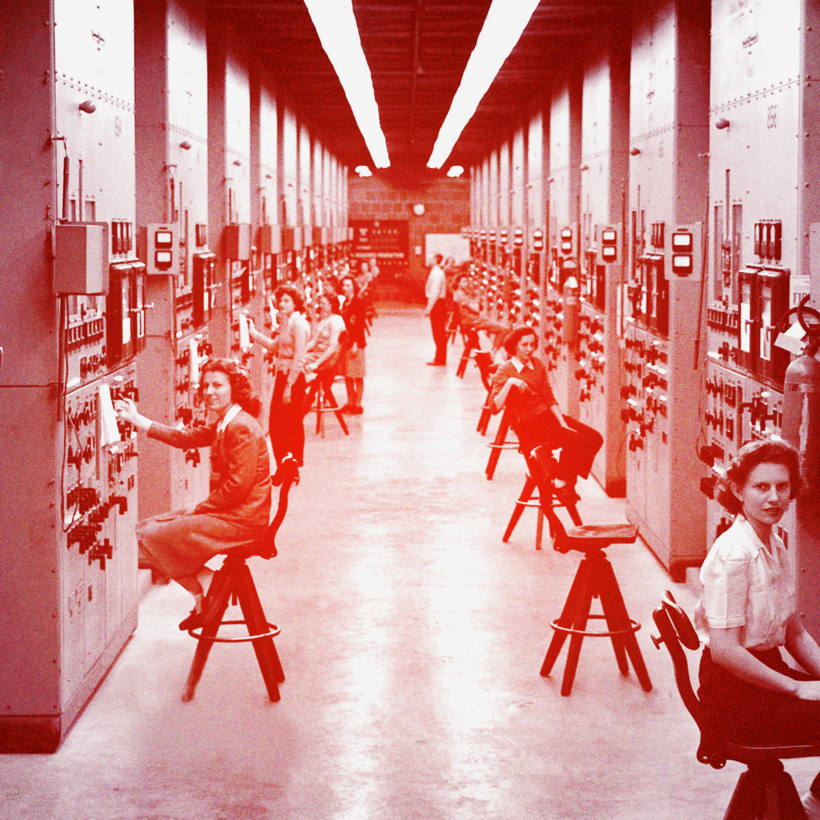Much of the history of the Manhattan Project has been reduced to the romance and drama of J. Robert Oppenheimer and his band of merry physicists high atop an isolated mesa in Los Alamos, New Mexico. But to understand the true wonder of the crash, classified effort to build an atomic bomb is to marvel, instead, at the sheer scale and scope of a project that employed hundreds of thousands of Americans in secret cities carved out of wilderness during the Second World War.
Oppenheimer was a terrific movie—I’ve seen it multiple times—but in writing The Devil Reached Toward the Sky: An Oral History of the Making and Unleashing of the Atomic Bomb, which brings together the first-person voices of nearly 500 participants in that world-changing, atom-smashing event, I was struck by how the success of the Manhattan Project emerged as much from America’s economic might as it did from the minds of the physicists involved. No other country in the world could have pulled off what the U.S. did in the midst of World War II, industry-wise and ambition-wise.
While World War II was fought in places such as Guadalcanal, El Alamein, and Bastogne, in the skies over Britain, Germany, and Japan, and in the seas of the North Atlantic, Midway, and Leyte Gulf, the war was won in factories like Willow Run, in Michigan, where a new bomber rolled out of the plant every 63 minutes, at Higgins Industries, in New Orleans, which churned out landing craft for Europe and the Pacific, and at the Manhattan Project’s giant uranium and plutonium plants, in Oak Ridge, Tennessee, and Hanford, Washington.
The project’s three major facilities at Oak Ridge, Los Alamos, and Hanford each had to be built from scratch—creating some of the most advanced scientific facilities in the world in remote, isolated locales, and amid wartime labor and materials shortages, to focus on industrial processes based on novel and largely untested methods—all under a heavy cloak of secrecy and misdirection. As Vannevar Bush, the head of the U.S. government’s scientific-research wing during the war, concluded, “The merging of efforts of science, engineering, technology, industry, labor, finance, and the military brought about the atomic bomb. In scale relative to the scale of its time, the building of the Pyramids offers a possible comparison.”
Los Alamos—a sprawling laboratory built on the site of a rustic private boys’ school—has long captured the world’s imagination in the generations since its creation. At its peak, the lab’s wartime population numbered 6,000 people, working in secret in the rugged canyons outside of Santa Fe. But it was at the other two main production facilities where one comes to understand the true ambition of the bomb.
In a desert on the eastern side of Washington State, 100,000 workers mined away at a half-million acres that had been nothing but scrubland and farm orchards at the start of the war. The plutonium that emerged from the Hanford facilities—enormous, windowless buildings about 800 feet long, 65 feet wide, and 80 feet tall that were nicknamed the “Queen Marys” for their resemblance to giant ocean liners laying upside down in the barren Washington desert—had existed at the war’s start only in microscopic amounts. The radioactive element had never even been seen by the naked human eye—and yet in a matter of months, scientists and engineers were planning how to manufacture it at the scale of kilograms.
The similarly giant uranium factories at Oak Ridge also had nearly 100,000 people living and working away in the mountains outside Knoxville, on sparsely inhabited land that just three years earlier had been all but untouched for a century. Construction teams built thousands of homes a month to keep up with the rapidly expanding workforce. Amid labor shortages, many of those workers who operated the calutrons—an instrument developed by the American physicist Ernest O. Lawrence for separating isotopes of uranium—were female high-school graduates from the surrounding rural communities. Tennessee Eastman, the industrial contractor brought in to manage the plants, gambled that the “Calutron Girls” could be taught the machines as well as any Ph.D. “The young ‘hillbilly’ girl operators were outproducing [the] scientists,” marveled Colonel Kenneth D. Nichols, one of the Manhattan Project’s leaders.
On the day the first atomic bomb was dropped, on Hiroshima, 80 years ago this week, the bus system at Oak Ridge was one of the 10 largest public-transit systems in the United States—and yet the city didn’t exist on any map and no one in the country beyond knew it existed at all. Creating such an incredible invention at that scale with that level of secrecy is perhaps the biggest success of the Manhattan Project.
Garrett M. Graff is the former editor of Politico and the author of Watergate: A New History, which was a finalist for the Pulitzer Prize for History

